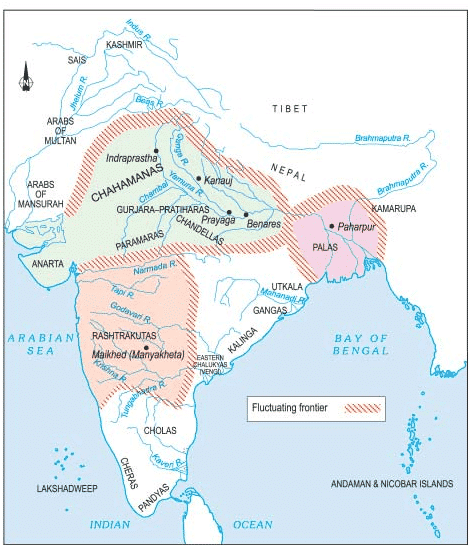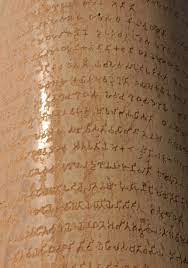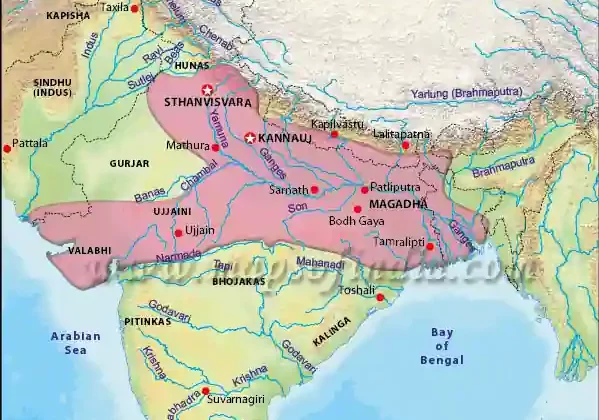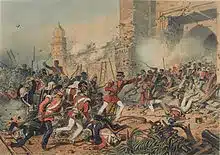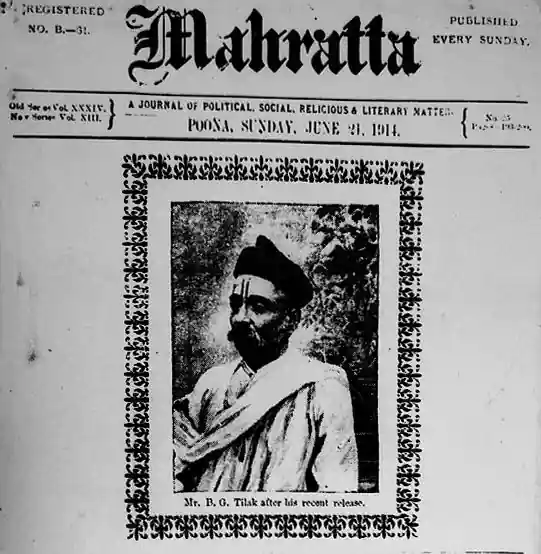Introduction
The word Coin is derived from the Latin word Cuneus and it is believed that the first recorded use of coins was in China and Greece around 700 BC and in India in the 6th century BC. The study of coins is known as Numismatics.
- The Indus valley civilisation of Mohenjo-Daro and Harappa dates back between 2500 BC and 1750 BC. There, however, is no consensus on whether the seals excavated from the sites were in fact coins. They conducted an extensive trade on a wide network, but it was predominantly conducted around the barter system.
- The Rigveda has references to nishka (gold) and nishka greeva (ornaments of gold) but it is not sure if these could be understood as coins. Buddhist texts and Panini’s Ashtadhyayi refer to terms like kahapana/karshapana, nikkha/nishka, shatamana, pada, vimshatika, trinshatika, and suvanna/suvarna.
- The first documented coinage is deemed to start with ‘Punch Marked‘ coins issued between the 7th-6th century BC and 1stcentury AD. These coins are called ‘punch-marked’ coins because of their manufacturing technique. Mostly made of silver, these bear symbols, each of which was punched on the coin with a separate punch.
Important Coins Of Ancient And Medieval India
The coins which are given in the table below are very important for competitive exams:
| Coins | Metal Types | Time Period |
| Nishka | Gold | Vedic Period |
| Satamana | Silver | Vedic Period |
| Karshpana | Silver, Copper | Vedic/Mauryan |
| Pana | Silver | Mauryan |
| Suvarnarupa | Gold | Mauryan |
| Tamrarupa | Copper | Mauryan |
| Rupyarupa | Silver | Mauryan |
| Tanka | Silver | Iltutmish |
| Jital | Copper | Iltutmish |
| Rupee | Silver | Sher Shah Suri |
| Dam | Copper | Sher Shah Suri |
| Mohur | Gold | Mughals |
| Ilahi | Gold | Akbar |
Punched Marked Coins
- The symbols on these were hammered using punches and dies. That is why we know them as punch-marked coins.
- Panini’s Ashtadhyayi cites that in punch-marked coins, the metallic pieces were stamped with symbols.
- Each unit was called ‘Ratti’ weighing 0.11 gram.
- Punch marked coins issued by various Mahajanapadas (around 6th century BC):The first Indian punch-marked coins called Puranas, Karshapanas or Pana were minted in the 6th century BC by the various Mahajanapadas.
- Irregular in shape, standard weight and were made up of silver.
- Different markings like Saurashtra had a humped bull, Dakshin Panchala had a Swastika.
- Punch marked coins during Mauryan Period (322–185 BC):Chanakya mentioned the minting of punch-marked coins such as rupyarupa (silver), suvarnarupa (gold), tamrarupa (copper) and sisarupa(lead) in his Arthashastra treatise.
- Out of the various symbols used, sun and six armed wheels were most consistent.
Indo-Greek Coins
- The Indo-Greeks introduced the fashion of showing the bustor head of the ruler on the coins.
- The legends were mentioned in two languages- in greek on one side and in kharoshti on another side of the coin.
- The Greek gods and goddesses were commonly mentioned in the Indo Greek coins.
- This coins contains detailed information about the issuing monarch, year of issue and sometimes the image of the reigning king.
- Coins are mainly made up of silver, copper, nickel, and lead.
- Kushan kings introduced Greek custom of engraving portrait heads on the coins.
- Khushan coins were adorned with a helmeted bust of the king on one side, and the king’s favorite deity on the reverse side.
Coins by Satavahanas
- The Satavahanas were the early rulers of the region between the rivers, Godavari and the Krishna. They were also referred to as the Andhras. Their coins were predominantly of copper and lead, however, silver issues are also known.
- The dialect used was Prakrit.
- These coins carried the motifs of fauna like elephants, lions, bulls, horses, etc. often juxtaposed against motifs from nature like hills, tree, etc.
- The silver coins of the Satavahanas carried portraits and bilingual legends, which were inspired by the Kshatrapa types.
Coins Of The Western Satraps Or The Indo-Scythians
- The term Western Kshatraps alludes to the set of rulers who ruled Western India between the 1stand 4thCentury AD.
- The Western Kshatrap coins are reckoned to be the earliest coins bearing dates.
- The common copper coins are the ‘bull and hill’ and the ‘elephant and hill’ types.
- They bear dates in the Shaka era, which started from 78 A.D.
- The coins of the western satraps have the head of the king on one side and on the other side carry the device of the Buddhist chaitya or stupa.
- Though written in a different language, the Prakrit language was generally used.
Coins Issued in Gupta Age
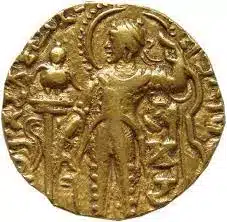
- Gupta coinage (4th-6th centuries AD) followed the tradition of the Kushans, depicting the king on the obverse and a deity on the reverse.
- Descriptions found in the coins: On one side of the coins, the king standing and making oblations before an altar, playing the veena, performing ashvamedha, riding a horse or an elephant, etc. On the other side is the goddess Lakshmi seated on a throne or a lotus seal.
- The inscriptions on the coins were all in Sanskrit (Brahmani Script).
- Mainly made of Gold, although they issued silver and copper coins too.
- Silver coins were issued only after Chandragupta II overthrew the Western Satraps.
- The earliest Gupta coins are attributed to Samudragupta, Chandragupta II and Kumaragupta and their coins often commemorate dynastic succession as well as significant socio-political events, like marriage alliances, the horse sacrifice, etc (King and queen type of coin of Chandragupta 1, Asvamedha type, etc.), or for that matter artistic and personal accomplishments of royal members (Lyrist, Archer, Lion-slayer etc.).
Coins of The Vardhanas
- Most important king of Varadhanas of Thaneshwar and kannauj was Harshavardhana.
- The silver coins consist on the one side the head of the king and on the other side, the figure of a peacock.
Coins of Chalukyan
- One side of the coins contains the image of a lion, temple and legends.Another side was left blank.
- Eastern Chalukyas had a symbol of the boar at the centre.
Coins of Rajput Dynasty
- Coins mostly of gold, copper but rarely of silver.Name of the king is depicted in Sanskrit on one side on the other side it contains the image of a goddess.
Coins of The Pandyan and Chola Dynasty
- Pandyan issued coins square in shape with an image of an elephant on the early period.
- Later, fish become a more important symbol in the coins.
- Gold and silver coins had Sanskrit inscription and copper coins in Tamil.
- Chola coins contain standing king on one side and seated goddess on the other side inscribed in the Sanskrit language.
Turkish and Delhi Sultanate Coins
- Contains inscription in the form of King’s name, title, and the date as per Hijri calendar.
- Didn’t bear an image of the issuing monarch.
- Silver Tanka and copper Jital was introduced by Iltutmish.
- Alauddin Khilji changed the existing design by dropping the name of the Khalif and replaced it by self-praising titles.
- Muhammad bin Tughlaq circulated bronze and copper coins and also issued token paper currency which was a flop.
- Sher Shah Suri (1540–1545) introduced two standards of weight–one of 178 grains for silver coins and one of 330 grains for copper coins. These were later known as the rupee and the dam respectively.
Mughal Coinage
- The standard gold coin of the Mughals was called as ‘Mohur’.
- The silver rupee which was an adoption from Sher shah’s currency was the most famous of Mughals coins.
- The Mughal copper coin was adopted from Sher Shah’s dam which weighed 320 to 330 grains.
- Akbar issued both round and square coins. He issued a gold coin named as Ilahi coins to propagate his new religious creed ‘Din-i-Illahi’.
- On this coin, it was written ‘God is great, may his glory be glorified’. The value of an ilahi coin was equal to 10 rupees. Sahansah was the largest gold coin. These coins bore the names of the persian solar months.
- Jahangir showed the legend in a couplet in the coins, also added the name of his beloved wife Noor Jahan. Most famous of his coins had an image of Zodiac signs.
Important Facts on Indian Coins
- The earliest reference of coins in the Indian context can be found in the Vedas. Nishka was the term used for coins made up of metals.
- Sher Shah Suri, a 16th century ruler of Afghan lineage introduced the Rupee. It was a silver currency. At that moment one rupee was equal to four coins made of copper. The Indian currency is still called Rupee. Rupya was made of silver which weighed almost 11.34 grams during that period.
- In ancient India, people used ‘money trees’ to store their coins. A money tree was a flat piece of metal, shaped like a tree, with metal branches.
- Gupta kings stamped their given names on the front of their coin and assumed names ending with “aditya,” or sun at the back side of the coin.
- Chhatrapati Shivaji issued gold huns and copper Shivarais with his titles in the Nagari script.
- The Wodeyar dynasty (Mysore: 1399–1947) coins of King Kanthiraya Narasa bore the image of the Narasimha avatar of Vishnu and weighed six to eight grains.
- Haidar Ali who overthrew Wodeyar dynasty for some time continued their coinage with the figures of Shiva and Parvati on the earlier gold pagodas. Tipu Sultan used two eras in his coins.
- The Coinage Act, 2011
- Replaced the Coinage Act, 1906.
- Term coin means coin made of any metal or any other material stamped by Government/authority empowered by government and includes—
- Commemorative Coin
- GOI one rupee note
- There are penalties prescribed for forgery relating to minting, etc. of coins
Source : RBI, Wikipedia
Also refer :


